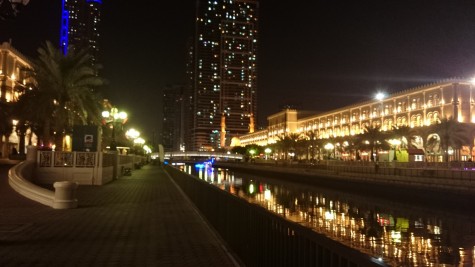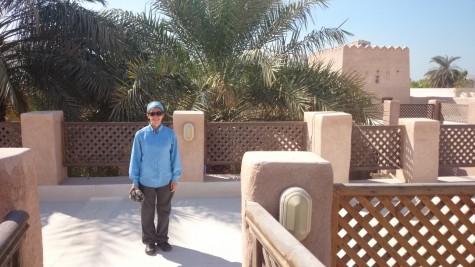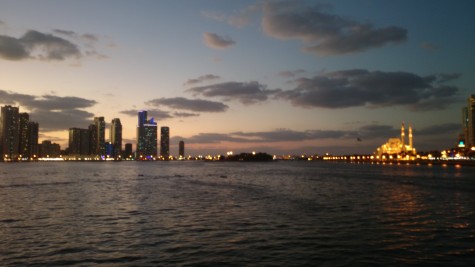Dubai has developed something of a fantastical reputation in the western world. It’s become a weird cross between Orientalist Arabia, Disneyland, and Star Trek. It’s also a recent “phenomenon.” I mean really, just when did you first hear about Dubai? Chances are it was in the past decade, maybe even the last five years. We did not grow up with images of the Burj Khalia the way we did with those of the Taj Mahal or the Colosseum. We never held romanticized notions of Dubai the way we did with Paris or London. In a way, Dubai has created its own space in our minds and in the public realm, much in the same way it’s created a physical space for itself right along the Persian Gulf.
There was a “before Dubai.” Sharjah, more so than any other Emirate in the UAE, has tried to emphasize that before element. It’s created a heritage center (think about what it means to create heritage) that proudly exhibits Arab culture, and specifically Emirati culture. In the heritage center are a cultural museum, calligraphy museum, and a few other smaller museums. The heritage center itself is incomplete and, when it is complete, will boast the requisite high-end residential buildings and trendy cafes.
While the immense wealth of the UAE has dramatically improved the standard of living for the Emiratis, it has also acted as a mask. The glitz, the glamor, and the sheen are what draw attention and people to this small country. What’s behind the mask is hidden and needs to be brought out by places like a heritage center, which itself is going to be glamorous and shiny.
On top of the money mask is the fact that the UAE is <20% Emirati. The rest are a small number of business-oriented expats and, mainly, migrant workers from south Asia. The official language of the UAE is Arabic. But of course, <20% actually speak Arabic natively. The unofficial languages of the UAE are Urdu and Hindi, which are spoken by more than half the population. It’s common for Emiratis to speak some Urdu or Hindi since they spend so much of their time communicating with south Asians. Our host, Haroon, says the first language he speaks when encountering someone on the street is English.
All of these factors make it difficult to “get a feel” for Dubai. It’s entirely possible to spend all our time in Dubai’s money bin and never know what’s happening beneath the surface. In fact, that almost feels encouraged at times.
The one element of the culture that is impossible to miss is Islam. No doubt bolstered by the the large number Muslim Pakistani migrants, like Haroon, that UAE is an Islamic nation is unmistakable, glam or no glam. When it’s time to pray, old men can be seen running to the mosque to arrive in time. Those who couldn’t make the crosswalk light wait impatiently on the other side. Cindy and I ride different subway cars and sit in different parts of the bus (she in front, I in the back). It’s easy to get lost while eating conveyor belt sushi next to a giant aquarium in which a diver is feeding fish. But when the call to prayer occurs, we’re instantly reminded of where we are.

 Español
Español

